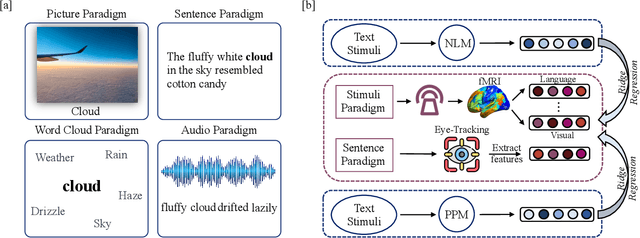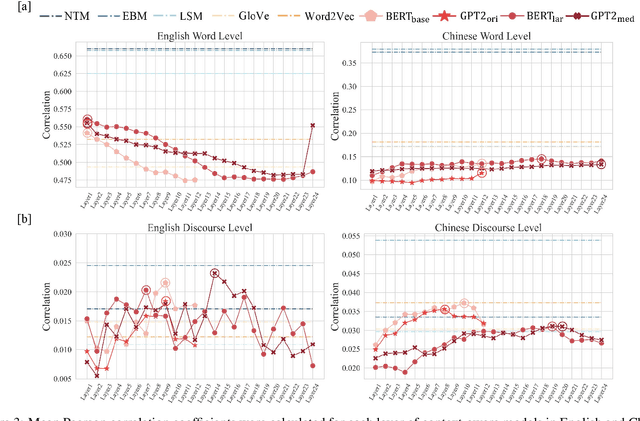Shaonan Wang
X-Instruction: Aligning Language Model in Low-resource Languages with Self-curated Cross-lingual Instructions
May 30, 2024Abstract:Large language models respond well in high-resource languages like English but struggle in low-resource languages. It may arise from the lack of high-quality instruction following data in these languages. Directly translating English samples into these languages can be a solution but unreliable, leading to responses with translation errors and lacking language-specific or cultural knowledge. To address this issue, we propose a novel method to construct cross-lingual instruction following samples with instruction in English and response in low-resource languages. Specifically, the language model first learns to generate appropriate English instructions according to the natural web texts in other languages as responses. The candidate cross-lingual instruction tuning samples are further refined and diversified. We have employed this method to build a large-scale cross-lingual instruction tuning dataset on 10 languages, namely X-Instruction. The instruction data built using our method incorporate more language-specific knowledge compared with the naive translation method. Experimental results have shown that the response quality of the model tuned on X-Instruction greatly exceeds the model distilled from a powerful teacher model, reaching or even surpassing the ones of ChatGPT. In addition, we find that models tuned on cross-lingual instruction following samples can follow the instruction in the output language without further tuning.
Navigating Brain Language Representations: A Comparative Analysis of Neural Language Models and Psychologically Plausible Models
Apr 30, 2024



Abstract:Neural language models, particularly large-scale ones, have been consistently proven to be most effective in predicting brain neural activity across a range of studies. However, previous research overlooked the comparison of these models with psychologically plausible ones. Moreover, evaluations were reliant on limited, single-modality, and English cognitive datasets. To address these questions, we conducted an analysis comparing encoding performance of various neural language models and psychologically plausible models. Our study utilized extensive multi-modal cognitive datasets, examining bilingual word and discourse levels. Surprisingly, our findings revealed that psychologically plausible models outperformed neural language models across diverse contexts, encompassing different modalities such as fMRI and eye-tracking, and spanning languages from English to Chinese. Among psychologically plausible models, the one incorporating embodied information emerged as particularly exceptional. This model demonstrated superior performance at both word and discourse levels, exhibiting robust prediction of brain activation across numerous regions in both English and Chinese.
MapGuide: A Simple yet Effective Method to Reconstruct Continuous Language from Brain Activities
Apr 02, 2024Abstract:Decoding continuous language from brain activity is a formidable yet promising field of research. It is particularly significant for aiding people with speech disabilities to communicate through brain signals. This field addresses the complex task of mapping brain signals to text. The previous best attempt reverse-engineered this process in an indirect way: it began by learning to encode brain activity from text and then guided text generation by aligning with predicted brain responses. In contrast, we propose a simple yet effective method that guides text reconstruction by directly comparing them with the predicted text embeddings mapped from brain activities. Comprehensive experiments reveal that our method significantly outperforms the current state-of-the-art model, showing average improvements of 77% and 54% on BLEU and METEOR scores. We further validate the proposed modules through detailed ablation studies and case analyses and highlight a critical correlation: the more precisely we map brain activities to text embeddings, the better the text reconstruction results. Such insight can simplify the task of reconstructing language from brain activities for future work, emphasizing the importance of improving brain-to-text-embedding mapping techniques.
Computational Models to Study Language Processing in the Human Brain: A Survey
Mar 20, 2024



Abstract:Despite differing from the human language processing mechanism in implementation and algorithms, current language models demonstrate remarkable human-like or surpassing language capabilities. Should computational language models be employed in studying the brain, and if so, when and how? To delve into this topic, this paper reviews efforts in using computational models for brain research, highlighting emerging trends. To ensure a fair comparison, the paper evaluates various computational models using consistent metrics on the same dataset. Our analysis reveals that no single model outperforms others on all datasets, underscoring the need for rich testing datasets and rigid experimental control to draw robust conclusions in studies involving computational models.
MulCogBench: A Multi-modal Cognitive Benchmark Dataset for Evaluating Chinese and English Computational Language Models
Mar 02, 2024Abstract:Pre-trained computational language models have recently made remarkable progress in harnessing the language abilities which were considered unique to humans. Their success has raised interest in whether these models represent and process language like humans. To answer this question, this paper proposes MulCogBench, a multi-modal cognitive benchmark dataset collected from native Chinese and English participants. It encompasses a variety of cognitive data, including subjective semantic ratings, eye-tracking, functional magnetic resonance imaging (fMRI), and magnetoencephalography (MEG). To assess the relationship between language models and cognitive data, we conducted a similarity-encoding analysis which decodes cognitive data based on its pattern similarity with textual embeddings. Results show that language models share significant similarities with human cognitive data and the similarity patterns are modulated by the data modality and stimuli complexity. Specifically, context-aware models outperform context-independent models as language stimulus complexity increases. The shallow layers of context-aware models are better aligned with the high-temporal-resolution MEG signals whereas the deeper layers show more similarity with the high-spatial-resolution fMRI. These results indicate that language models have a delicate relationship with brain language representations. Moreover, the results between Chinese and English are highly consistent, suggesting the generalizability of these findings across languages.
A Self-supervised Pressure Map human keypoint Detection Approch: Optimizing Generalization and Computational Efficiency Across Datasets
Feb 22, 2024Abstract:In environments where RGB images are inadequate, pressure maps is a viable alternative, garnering scholarly attention. This study introduces a novel self-supervised pressure map keypoint detection (SPMKD) method, addressing the current gap in specialized designs for human keypoint extraction from pressure maps. Central to our contribution is the Encoder-Fuser-Decoder (EFD) model, which is a robust framework that integrates a lightweight encoder for precise human keypoint detection, a fuser for efficient gradient propagation, and a decoder that transforms human keypoints into reconstructed pressure maps. This structure is further enhanced by the Classification-to-Regression Weight Transfer (CRWT) method, which fine-tunes accuracy through initial classification task training. This innovation not only enhances human keypoint generalization without manual annotations but also showcases remarkable efficiency and generalization, evidenced by a reduction to only $5.96\%$ in FLOPs and $1.11\%$ in parameter count compared to the baseline methods.
Align after Pre-train: Improving Multilingual Generative Models with Cross-lingual Alignment
Nov 14, 2023Abstract:Multilingual generative models obtain remarkable cross-lingual capabilities through pre-training on large-scale corpora. However, they still exhibit a performance bias toward high-resource languages, and learn isolated distributions of sentence representations across languages. To bridge this gap, we propose a simple yet effective alignment framework exploiting pairs of translation sentences. It aligns the internal sentence representations across different languages via multilingual contrastive learning and aligns model outputs by answering prompts in different languages. Experimental results demonstrate that even with less than 0.1 {\textperthousand} of pre-training tokens, our alignment framework significantly boosts the cross-lingual abilities of generative models and mitigates the performance gap. Further analysis reveals that it results in a better internal multilingual representation distribution of multilingual models.
Interpreting and Exploiting Functional Specialization in Multi-Head Attention under Multi-task Learning
Oct 16, 2023



Abstract:Transformer-based models, even though achieving super-human performance on several downstream tasks, are often regarded as a black box and used as a whole. It is still unclear what mechanisms they have learned, especially their core module: multi-head attention. Inspired by functional specialization in the human brain, which helps to efficiently handle multiple tasks, this work attempts to figure out whether the multi-head attention module will evolve similar function separation under multi-tasking training. If it is, can this mechanism further improve the model performance? To investigate these questions, we introduce an interpreting method to quantify the degree of functional specialization in multi-head attention. We further propose a simple multi-task training method to increase functional specialization and mitigate negative information transfer in multi-task learning. Experimental results on seven pre-trained transformer models have demonstrated that multi-head attention does evolve functional specialization phenomenon after multi-task training which is affected by the similarity of tasks. Moreover, the multi-task training strategy based on functional specialization boosts performance in both multi-task learning and transfer learning without adding any parameters.
Contrast, Attend and Diffuse to Decode High-Resolution Images from Brain Activities
May 26, 2023



Abstract:Decoding visual stimuli from neural responses recorded by functional Magnetic Resonance Imaging (fMRI) presents an intriguing intersection between cognitive neuroscience and machine learning, promising advancements in understanding human visual perception and building non-invasive brain-machine interfaces. However, the task is challenging due to the noisy nature of fMRI signals and the intricate pattern of brain visual representations. To mitigate these challenges, we introduce a two-phase fMRI representation learning framework. The first phase pre-trains an fMRI feature learner with a proposed Double-contrastive Mask Auto-encoder to learn denoised representations. The second phase tunes the feature learner to attend to neural activation patterns most informative for visual reconstruction with guidance from an image auto-encoder. The optimized fMRI feature learner then conditions a latent diffusion model to reconstruct image stimuli from brain activities. Experimental results demonstrate our model's superiority in generating high-resolution and semantically accurate images, substantially exceeding previous state-of-the-art methods by 39.34% in the 50-way-top-1 semantic classification accuracy. Our research invites further exploration of the decoding task's potential and contributes to the development of non-invasive brain-machine interfaces.
Language Cognition and Language Computation -- Human and Machine Language Understanding
Jan 12, 2023Abstract:Language understanding is a key scientific issue in the fields of cognitive and computer science. However, the two disciplines differ substantially in the specific research questions. Cognitive science focuses on analyzing the specific mechanism of the brain and investigating the brain's response to language; few studies have examined the brain's language system as a whole. By contrast, computer scientists focus on the efficiency of practical applications when choosing research questions but may ignore the most essential laws of language. Given these differences, can a combination of the disciplines offer new insights for building intelligent language models and studying language cognitive mechanisms? In the following text, we first review the research questions, history, and methods of language understanding in cognitive and computer science, focusing on the current progress and challenges. We then compare and contrast the research of language understanding in cognitive and computer sciences. Finally, we review existing work that combines insights from language cognition and language computation and offer prospects for future development trends.
 Add to Chrome
Add to Chrome Add to Firefox
Add to Firefox Add to Edge
Add to Edge